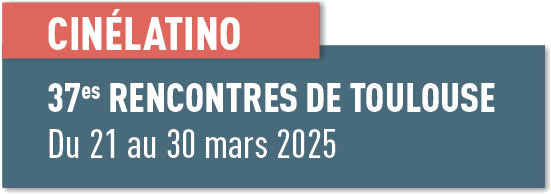Selection:
Director:
Country:
- Colombia
- France
Format:
Type:
Script writer(s):
Synopsis:
In the mid-90s,with the advent of mechanized cane production in Villapaz (a village south of Cali, Colombia), the inhabitants ceased growing their own crops and being self-sufficient to become proletarians. Víctor Gonzáles, aged 28, belongs to that generation of young people for whom the only sources of income in the village were cutting sugar-canes (single crop in the area) or working in the building trade. Yet 3 years ago, Víctor discovered that he could film with his mobile phone. Since then there has been no stopping him. In Villapaz he is known to everyone as 'the Director'. His films have brought about a small revolution in the village, and have given importance to that small community, great numbers of whom rush to see the screenings organised in the main public park.
'I like fiction, providing it holds real, true-to-life things". The settings of Víctor's films are the houses with mud walls, the backyards where people raise hens and grow vegetables. He conceives his characters from the people in Villapaz - the rich cane-field owners who dress like traffickers, the hen-thieves who steal into the backyards, the village idiot who does not speak correctly. Magic and religion are present in his films: there are stories of wizards and healers, of evil spells and legends such as that of the 'hairy hand' that kills children, or that of the banana tree from which blood, instead of milk, gushes out if it is cut during Holy Week. As he uses natural places and actors and builds the stories from actual facts or the community's beliefs, the inhabitants of Villapaz mix up fact and fiction. Víctor's films often spark off fierce debates, because of their tragic endings, because, according to the people, the villainous or ignorant characters may tarnish the reputation of the village in the cities. His films denounce the injustices, show the beliefs of the population, and tries to understand and reproduce the community's traditions. The documentary shows the multiple facets of Víctor: the building worker, the cane-field labourer, the artist, the director. His film-making work will be a gate into some cultural aspects of Villapaz' community. The main thread will be the making of one of his films from the original inspiration until its first screening in the public park.
Visual concept:
The main thread of the documentary will be the making of a long feature by Víctor, from the original idea until the first screening in the public park of the village. Meanwhile, we shall become acquainted with his abundant production, his methods, his interaction with the community. Emphasis will be laid on the daily challenges the director has to meet to carry out the shooting of a film. Through the inhabitants of the village who appear in the films and through the fiction stories those films tell, we shall build up a documentary where the limits between reality and figments of the imagination, between fact and fantasy, will appear blurred, just as it occurs in Víctor's films, and in the relationship Villapaz' inhabitants have to their cinema. When Víctor's neighbours (actors in his films) speak about their roles, one wonders whether they are referring to the characters they play or to their real selves. So flimsy is the frontier that at times the confusion seems to stem from ingenuousness, but at other times it appears like a deliberate game with the audience (who, in our case, are behind the camera!) This ludic aspect, both ingenuous and perceptive, will set the tone of the documentary.







